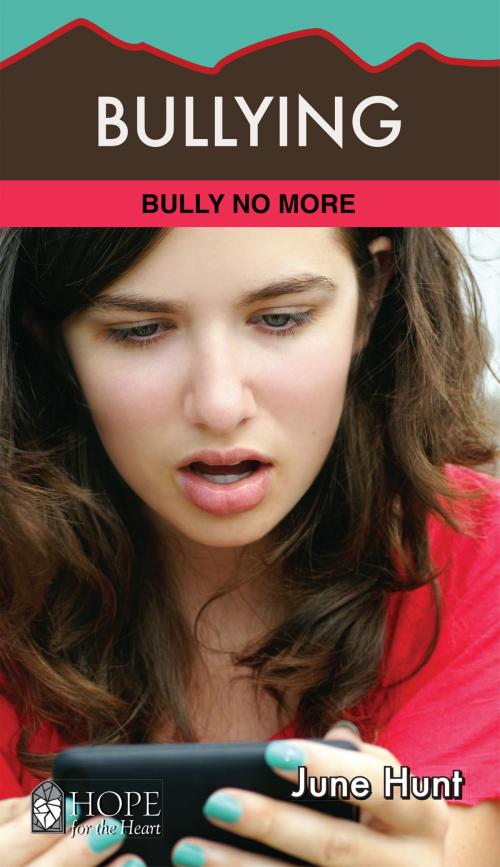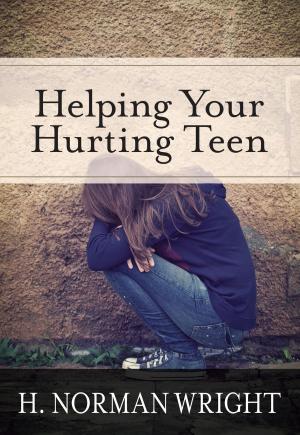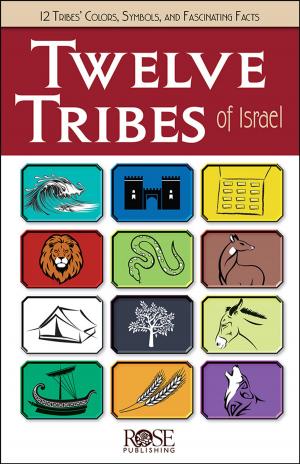Bullying
Bully No More
Nonfiction, Religion & Spirituality, Inspiration & Meditation, Pastoral Counseling| Author: | June Hunt | ISBN: | 9781596369276 |
| Publisher: | Rose Publishing, Inc. | Publication: | July 14, 2014 |
| Imprint: | Rose Publishing, Inc. | Language: | English |
| Author: | June Hunt |
| ISBN: | 9781596369276 |
| Publisher: | Rose Publishing, Inc. |
| Publication: | July 14, 2014 |
| Imprint: | Rose Publishing, Inc. |
| Language: | English |
From school bullying in the cafeteria to cyberbullying after school, the statistics on bullying are staggering. This practical, quick-reference book shows how to spot, prevent, and respond to all forms of bullying. It covers everything from the root causes of bullying to the realistic ways to stop it. Perfect for teens, teachers, church leaders, youth workers, pastors, and parents.
Get a close-up look at the common characteristics of the bully, the bystander, and the victim—and discover practical ways to help each of them stop the cycle of bullying and find a new identity. Receive incredible insight and biblical wisdom from Christian Counselor June Hunt on how to:
• Identify the common causes and signs of bullying
• Restore the self-esteem of a bullied child or teen
• Respond when your child is being bullied
• Safely stand up and stick up for a person being bullied
4 Truths You Need to Know About Bullying
MYTH: Bullying is normal—simply a rite of passage.
TRUTH: Bullying is inexcusable and can never be dismissed as just "kids being kids." Bullying causes great emotional and psychological pain—causing kids to miss school, struggle with depression, contemplate suicide, and often times become a bully themselves.
MYTH: Bullying is obvious and easy to identify
TRUTH: Bullying often goes undetected because victims (and bystanders) feel too much shame and embarrassment to report it, feeling it is their own fault or feeling paralyzed by fear. Bullies intentionally use subtle, yet destructive tactics that are severe, threatening, and persistent.
MYTH: Bullying is not that serious
TRUTH: Bullying is any deliberate, hostile, physical, psychological, or verbal activity involving an imbalance of power with the intent to harm and induce fear. It is persistent, pervasive abuse that creates an intimidating or terrorizing environment.
MYTH: Bullies are underachievers with low self- worth and are easily recognized.
TRUTH: Bullies often appear "normal" and can hide behind a mask of friendship. They perceive and project popularity through power. Often times they have been victims of bullying themselves.
Find out what you need to know about bullying and how to take action against it with this quick-reference guide. It includes—
• Definition Section on Bullying—What is Bullying?
June Hunt begins this book by answering the question, "What is bullying?" She gives easy-to-understand explanations on bullying that will help you quickly grasp what bullying is and how it is different from other conflicts. She also tells the heart-breaking story of Phoebe Prince, a teenage viciously bullied who felt so hopeless she took her own life. Using Phoebe's experience, June Hunt explains the "bullying process," a process with distinct stages that become more and more severe if left unchecked. June Hunt ends this section by emphasizing God's heart on bullying and His message of hope for the broken hearted.• Characteristics and Causes Section: The Bully, The Bullied, and The Bystander
This helpful section answers the fundamental questions: How can I spot the signs of bullying?Why do bullies...bully? and What are the characteristics of the bully, the bullied, and the bystander?
• Learn how to spot the mental, behavioral, and social traits of bullies. (Checklist included)
• Discover the 32 signs of possible bullying—includes social indicators, such as constantly wanting to miss school, to emotional "red flags," such as severe depression. (Checklist included).
• Find out the 5 types of victims and the 3 types of bystanders—from the apathetic bystander who feels no obligation to help to the passive bystander who fears becoming the bully's next target.
• Explains the root causes of bullying, revealing the lies bullies believe about themselves (and others) that motivate their behavior. Shows their underlying desire for love, security, and acceptance.
• Steps to Solution Section: How to Stop Bullying
Gives helpful advice on how to help those who have been bullied—and who bully others. It provides helpful do's and don'ts for teachers, schools, parents, and church leaders on how to handle (and prevent) bullying situations. It gives specific action steps victims of bullying (as well as bystanders) can take to stop bullying. Find out—
• How schools and parents can prevent bullying.
• How an adult can confront a child who constantly bullies others. (Provides conversation models.)
• How to encourage those who've been bullied to speak up for help and how bystanders can practice intervening. (Gives role-playing ideas and the 4 key ways bystanders can help.)
How to Stop Bullying: 3 Biblical Steps to Prevent Bullying
June Hunt gives 7 practical ways parents can prevent bullying in this quick-reference book. Here's just 3 of the top ways parents can prevent bullying.
• Model relationships of respect, kindness, civility, and self-control.
• Children most often learn how to interact and relate to others by observing and interacting with their parents, siblings, and other family and friends.
• Purposefully connect with your child's online community.
• Develop guidelines with your child concerning blogging and social media services and join (or at least monitor) your child's connections online.
• Encourage your children to stand up for themselves and others.
• Help your children communicate effectively by learning to recognize nonverbal messages, remain calm under stress, give voice to their thoughts and feelings, and to empathize with the situation and perspective of others.
Learn How to Spot 4 Common Signs of Bullying
There are over 32 signs of bullyingthat June Hunt reveals in her book Bullying: Bully No More. Here's just 4 of the common "red flag" parents, teachers, church leaders, and peers should look for and monitor.
• Mental Signs of Bullying
• "I'm too weak and unimportant."
• "The situation is hopeless. There's no way out."
• Emotional Signs of Bullying
• Feels isolated and lonely
• Struggles with poor self-worth
• Behavioral Signs of Bullying
• Suffers from headaches and stomachaches
• Negative change in eating patterns
• Social Signs of Bullying
• Makes frequent excuses to miss school
• Withdraws from social activities
"The bully seeks power to 'lord it over' others. But the only true Lord, the creator of the Golden Rule, wisely said, 'Do to others what you would have them do to you' (Matthew 7:12)." — June Hunt
Look for all 36 titles in the Hope For The Heart Biblical Counseling Library. These mini-books are for people who seek freedom from codependency, anger, conflict, verbal and emotional abuse, depression, or other problems.
Get a close-up look at the common characteristics of the bully, the bystander, and the victim—and discover practical ways to help each of them stop the cycle of bullying and find a new identity. Receive incredible insight and biblical wisdom from Christian Counselor June Hunt on how to:
• Identify the common causes and signs of bullying
• Restore the self-esteem of a bullied child or teen
• Respond when your child is being bullied
• Safely stand up and stick up for a person being bullied
4 Truths You Need to Know About Bullying
MYTH: Bullying is normal—simply a rite of passage.
TRUTH: Bullying is inexcusable and can never be dismissed as just "kids being kids." Bullying causes great emotional and psychological pain—causing kids to miss school, struggle with depression, contemplate suicide, and often times become a bully themselves.
MYTH: Bullying is obvious and easy to identify
TRUTH: Bullying often goes undetected because victims (and bystanders) feel too much shame and embarrassment to report it, feeling it is their own fault or feeling paralyzed by fear. Bullies intentionally use subtle, yet destructive tactics that are severe, threatening, and persistent.
MYTH: Bullying is not that serious
TRUTH: Bullying is any deliberate, hostile, physical, psychological, or verbal activity involving an imbalance of power with the intent to harm and induce fear. It is persistent, pervasive abuse that creates an intimidating or terrorizing environment.
MYTH: Bullies are underachievers with low self- worth and are easily recognized.
TRUTH: Bullies often appear "normal" and can hide behind a mask of friendship. They perceive and project popularity through power. Often times they have been victims of bullying themselves.
Find out what you need to know about bullying and how to take action against it with this quick-reference guide. It includes—
• Definition Section on Bullying—What is Bullying?
June Hunt begins this book by answering the question, "What is bullying?" She gives easy-to-understand explanations on bullying that will help you quickly grasp what bullying is and how it is different from other conflicts. She also tells the heart-breaking story of Phoebe Prince, a teenage viciously bullied who felt so hopeless she took her own life. Using Phoebe's experience, June Hunt explains the "bullying process," a process with distinct stages that become more and more severe if left unchecked. June Hunt ends this section by emphasizing God's heart on bullying and His message of hope for the broken hearted.• Characteristics and Causes Section: The Bully, The Bullied, and The Bystander
This helpful section answers the fundamental questions: How can I spot the signs of bullying?Why do bullies...bully? and What are the characteristics of the bully, the bullied, and the bystander?
• Learn how to spot the mental, behavioral, and social traits of bullies. (Checklist included)
• Discover the 32 signs of possible bullying—includes social indicators, such as constantly wanting to miss school, to emotional "red flags," such as severe depression. (Checklist included).
• Find out the 5 types of victims and the 3 types of bystanders—from the apathetic bystander who feels no obligation to help to the passive bystander who fears becoming the bully's next target.
• Explains the root causes of bullying, revealing the lies bullies believe about themselves (and others) that motivate their behavior. Shows their underlying desire for love, security, and acceptance.
• Steps to Solution Section: How to Stop Bullying
Gives helpful advice on how to help those who have been bullied—and who bully others. It provides helpful do's and don'ts for teachers, schools, parents, and church leaders on how to handle (and prevent) bullying situations. It gives specific action steps victims of bullying (as well as bystanders) can take to stop bullying. Find out—
• How schools and parents can prevent bullying.
• How an adult can confront a child who constantly bullies others. (Provides conversation models.)
• How to encourage those who've been bullied to speak up for help and how bystanders can practice intervening. (Gives role-playing ideas and the 4 key ways bystanders can help.)
How to Stop Bullying: 3 Biblical Steps to Prevent Bullying
June Hunt gives 7 practical ways parents can prevent bullying in this quick-reference book. Here's just 3 of the top ways parents can prevent bullying.
• Model relationships of respect, kindness, civility, and self-control.
• Children most often learn how to interact and relate to others by observing and interacting with their parents, siblings, and other family and friends.
• Purposefully connect with your child's online community.
• Develop guidelines with your child concerning blogging and social media services and join (or at least monitor) your child's connections online.
• Encourage your children to stand up for themselves and others.
• Help your children communicate effectively by learning to recognize nonverbal messages, remain calm under stress, give voice to their thoughts and feelings, and to empathize with the situation and perspective of others.
Learn How to Spot 4 Common Signs of Bullying
There are over 32 signs of bullyingthat June Hunt reveals in her book Bullying: Bully No More. Here's just 4 of the common "red flag" parents, teachers, church leaders, and peers should look for and monitor.
• Mental Signs of Bullying
• "I'm too weak and unimportant."
• "The situation is hopeless. There's no way out."
• Emotional Signs of Bullying
• Feels isolated and lonely
• Struggles with poor self-worth
• Behavioral Signs of Bullying
• Suffers from headaches and stomachaches
• Negative change in eating patterns
• Social Signs of Bullying
• Makes frequent excuses to miss school
• Withdraws from social activities
"The bully seeks power to 'lord it over' others. But the only true Lord, the creator of the Golden Rule, wisely said, 'Do to others what you would have them do to you' (Matthew 7:12)." — June Hunt
Look for all 36 titles in the Hope For The Heart Biblical Counseling Library. These mini-books are for people who seek freedom from codependency, anger, conflict, verbal and emotional abuse, depression, or other problems.
From school bullying in the cafeteria to cyberbullying after school, the statistics on bullying are staggering. This practical, quick-reference book shows how to spot, prevent, and respond to all forms of bullying. It covers everything from the root causes of bullying to the realistic ways to stop it. Perfect for teens, teachers, church leaders, youth workers, pastors, and parents.
Get a close-up look at the common characteristics of the bully, the bystander, and the victim—and discover practical ways to help each of them stop the cycle of bullying and find a new identity. Receive incredible insight and biblical wisdom from Christian Counselor June Hunt on how to:
• Identify the common causes and signs of bullying
• Restore the self-esteem of a bullied child or teen
• Respond when your child is being bullied
• Safely stand up and stick up for a person being bullied
4 Truths You Need to Know About Bullying
MYTH: Bullying is normal—simply a rite of passage.
TRUTH: Bullying is inexcusable and can never be dismissed as just "kids being kids." Bullying causes great emotional and psychological pain—causing kids to miss school, struggle with depression, contemplate suicide, and often times become a bully themselves.
MYTH: Bullying is obvious and easy to identify
TRUTH: Bullying often goes undetected because victims (and bystanders) feel too much shame and embarrassment to report it, feeling it is their own fault or feeling paralyzed by fear. Bullies intentionally use subtle, yet destructive tactics that are severe, threatening, and persistent.
MYTH: Bullying is not that serious
TRUTH: Bullying is any deliberate, hostile, physical, psychological, or verbal activity involving an imbalance of power with the intent to harm and induce fear. It is persistent, pervasive abuse that creates an intimidating or terrorizing environment.
MYTH: Bullies are underachievers with low self- worth and are easily recognized.
TRUTH: Bullies often appear "normal" and can hide behind a mask of friendship. They perceive and project popularity through power. Often times they have been victims of bullying themselves.
Find out what you need to know about bullying and how to take action against it with this quick-reference guide. It includes—
• Definition Section on Bullying—What is Bullying?
June Hunt begins this book by answering the question, "What is bullying?" She gives easy-to-understand explanations on bullying that will help you quickly grasp what bullying is and how it is different from other conflicts. She also tells the heart-breaking story of Phoebe Prince, a teenage viciously bullied who felt so hopeless she took her own life. Using Phoebe's experience, June Hunt explains the "bullying process," a process with distinct stages that become more and more severe if left unchecked. June Hunt ends this section by emphasizing God's heart on bullying and His message of hope for the broken hearted.• Characteristics and Causes Section: The Bully, The Bullied, and The Bystander
This helpful section answers the fundamental questions: How can I spot the signs of bullying?Why do bullies...bully? and What are the characteristics of the bully, the bullied, and the bystander?
• Learn how to spot the mental, behavioral, and social traits of bullies. (Checklist included)
• Discover the 32 signs of possible bullying—includes social indicators, such as constantly wanting to miss school, to emotional "red flags," such as severe depression. (Checklist included).
• Find out the 5 types of victims and the 3 types of bystanders—from the apathetic bystander who feels no obligation to help to the passive bystander who fears becoming the bully's next target.
• Explains the root causes of bullying, revealing the lies bullies believe about themselves (and others) that motivate their behavior. Shows their underlying desire for love, security, and acceptance.
• Steps to Solution Section: How to Stop Bullying
Gives helpful advice on how to help those who have been bullied—and who bully others. It provides helpful do's and don'ts for teachers, schools, parents, and church leaders on how to handle (and prevent) bullying situations. It gives specific action steps victims of bullying (as well as bystanders) can take to stop bullying. Find out—
• How schools and parents can prevent bullying.
• How an adult can confront a child who constantly bullies others. (Provides conversation models.)
• How to encourage those who've been bullied to speak up for help and how bystanders can practice intervening. (Gives role-playing ideas and the 4 key ways bystanders can help.)
How to Stop Bullying: 3 Biblical Steps to Prevent Bullying
June Hunt gives 7 practical ways parents can prevent bullying in this quick-reference book. Here's just 3 of the top ways parents can prevent bullying.
• Model relationships of respect, kindness, civility, and self-control.
• Children most often learn how to interact and relate to others by observing and interacting with their parents, siblings, and other family and friends.
• Purposefully connect with your child's online community.
• Develop guidelines with your child concerning blogging and social media services and join (or at least monitor) your child's connections online.
• Encourage your children to stand up for themselves and others.
• Help your children communicate effectively by learning to recognize nonverbal messages, remain calm under stress, give voice to their thoughts and feelings, and to empathize with the situation and perspective of others.
Learn How to Spot 4 Common Signs of Bullying
There are over 32 signs of bullyingthat June Hunt reveals in her book Bullying: Bully No More. Here's just 4 of the common "red flag" parents, teachers, church leaders, and peers should look for and monitor.
• Mental Signs of Bullying
• "I'm too weak and unimportant."
• "The situation is hopeless. There's no way out."
• Emotional Signs of Bullying
• Feels isolated and lonely
• Struggles with poor self-worth
• Behavioral Signs of Bullying
• Suffers from headaches and stomachaches
• Negative change in eating patterns
• Social Signs of Bullying
• Makes frequent excuses to miss school
• Withdraws from social activities
"The bully seeks power to 'lord it over' others. But the only true Lord, the creator of the Golden Rule, wisely said, 'Do to others what you would have them do to you' (Matthew 7:12)." — June Hunt
Look for all 36 titles in the Hope For The Heart Biblical Counseling Library. These mini-books are for people who seek freedom from codependency, anger, conflict, verbal and emotional abuse, depression, or other problems.
Get a close-up look at the common characteristics of the bully, the bystander, and the victim—and discover practical ways to help each of them stop the cycle of bullying and find a new identity. Receive incredible insight and biblical wisdom from Christian Counselor June Hunt on how to:
• Identify the common causes and signs of bullying
• Restore the self-esteem of a bullied child or teen
• Respond when your child is being bullied
• Safely stand up and stick up for a person being bullied
4 Truths You Need to Know About Bullying
MYTH: Bullying is normal—simply a rite of passage.
TRUTH: Bullying is inexcusable and can never be dismissed as just "kids being kids." Bullying causes great emotional and psychological pain—causing kids to miss school, struggle with depression, contemplate suicide, and often times become a bully themselves.
MYTH: Bullying is obvious and easy to identify
TRUTH: Bullying often goes undetected because victims (and bystanders) feel too much shame and embarrassment to report it, feeling it is their own fault or feeling paralyzed by fear. Bullies intentionally use subtle, yet destructive tactics that are severe, threatening, and persistent.
MYTH: Bullying is not that serious
TRUTH: Bullying is any deliberate, hostile, physical, psychological, or verbal activity involving an imbalance of power with the intent to harm and induce fear. It is persistent, pervasive abuse that creates an intimidating or terrorizing environment.
MYTH: Bullies are underachievers with low self- worth and are easily recognized.
TRUTH: Bullies often appear "normal" and can hide behind a mask of friendship. They perceive and project popularity through power. Often times they have been victims of bullying themselves.
Find out what you need to know about bullying and how to take action against it with this quick-reference guide. It includes—
• Definition Section on Bullying—What is Bullying?
June Hunt begins this book by answering the question, "What is bullying?" She gives easy-to-understand explanations on bullying that will help you quickly grasp what bullying is and how it is different from other conflicts. She also tells the heart-breaking story of Phoebe Prince, a teenage viciously bullied who felt so hopeless she took her own life. Using Phoebe's experience, June Hunt explains the "bullying process," a process with distinct stages that become more and more severe if left unchecked. June Hunt ends this section by emphasizing God's heart on bullying and His message of hope for the broken hearted.• Characteristics and Causes Section: The Bully, The Bullied, and The Bystander
This helpful section answers the fundamental questions: How can I spot the signs of bullying?Why do bullies...bully? and What are the characteristics of the bully, the bullied, and the bystander?
• Learn how to spot the mental, behavioral, and social traits of bullies. (Checklist included)
• Discover the 32 signs of possible bullying—includes social indicators, such as constantly wanting to miss school, to emotional "red flags," such as severe depression. (Checklist included).
• Find out the 5 types of victims and the 3 types of bystanders—from the apathetic bystander who feels no obligation to help to the passive bystander who fears becoming the bully's next target.
• Explains the root causes of bullying, revealing the lies bullies believe about themselves (and others) that motivate their behavior. Shows their underlying desire for love, security, and acceptance.
• Steps to Solution Section: How to Stop Bullying
Gives helpful advice on how to help those who have been bullied—and who bully others. It provides helpful do's and don'ts for teachers, schools, parents, and church leaders on how to handle (and prevent) bullying situations. It gives specific action steps victims of bullying (as well as bystanders) can take to stop bullying. Find out—
• How schools and parents can prevent bullying.
• How an adult can confront a child who constantly bullies others. (Provides conversation models.)
• How to encourage those who've been bullied to speak up for help and how bystanders can practice intervening. (Gives role-playing ideas and the 4 key ways bystanders can help.)
How to Stop Bullying: 3 Biblical Steps to Prevent Bullying
June Hunt gives 7 practical ways parents can prevent bullying in this quick-reference book. Here's just 3 of the top ways parents can prevent bullying.
• Model relationships of respect, kindness, civility, and self-control.
• Children most often learn how to interact and relate to others by observing and interacting with their parents, siblings, and other family and friends.
• Purposefully connect with your child's online community.
• Develop guidelines with your child concerning blogging and social media services and join (or at least monitor) your child's connections online.
• Encourage your children to stand up for themselves and others.
• Help your children communicate effectively by learning to recognize nonverbal messages, remain calm under stress, give voice to their thoughts and feelings, and to empathize with the situation and perspective of others.
Learn How to Spot 4 Common Signs of Bullying
There are over 32 signs of bullyingthat June Hunt reveals in her book Bullying: Bully No More. Here's just 4 of the common "red flag" parents, teachers, church leaders, and peers should look for and monitor.
• Mental Signs of Bullying
• "I'm too weak and unimportant."
• "The situation is hopeless. There's no way out."
• Emotional Signs of Bullying
• Feels isolated and lonely
• Struggles with poor self-worth
• Behavioral Signs of Bullying
• Suffers from headaches and stomachaches
• Negative change in eating patterns
• Social Signs of Bullying
• Makes frequent excuses to miss school
• Withdraws from social activities
"The bully seeks power to 'lord it over' others. But the only true Lord, the creator of the Golden Rule, wisely said, 'Do to others what you would have them do to you' (Matthew 7:12)." — June Hunt
Look for all 36 titles in the Hope For The Heart Biblical Counseling Library. These mini-books are for people who seek freedom from codependency, anger, conflict, verbal and emotional abuse, depression, or other problems.















